160. Strada Cattolica
Anyone who has read my profile - or knows me to any extent - is aware I am Catholic, albeit one with some concerns about the direction and leadership of same, both here in the Archdiocese of Louisville as well as the seat of government for the church at the Vatican City. Nonetheless I am and continue to be a communicant with Holy Mother The Church, the one true universal and catholic church, the Roman Catholic Church - a Papist!
Yesterday, and for the remaining Sundays in August, I am a lector at the 8:30 am masses, one of the things I do on a regular rotating basis for my church. I also call Bingo, serve as emcee at the Summer Picnic, and volunteer at the Altar Sodality parties. This all the while I am looking into other faith practices and beliefs. I've attended a few times masses, or services, at churches of the Episcopal and United Church of Christ faiths. But, in my wanderings, I am usually drawn back to my home parish and the familiar family I have there, a place I've been a member of since 1979, a place I can call home.
This week will be a week of history in the Louisville Catholic church. We are getting a new archbishop, the fourth archbishop and also the ninth bishop of Louisville, the Most Reverend Joseph E. Kurtz. Archbishop Kurtz will be formally installed in a service on Wednesday, August 15th, which is also a feast day in the church, a holy day of obligation in honor of Mary, the mother of Jesus, which marks her Assumption into heaven, a doctrine made a part of Catholic dogma only fifty-seven years ago under Pope Pius XII, but based on a belief that has been in circulation since the 400s. Archbishop Kurtz succeeds Archbishop Thomas Kelly who was installed as bishop exactly twenty-five years ago, just a few short years after my formal membership in the Roman Catholic Church. Like many who have "become" Catholic in the last two generations, I have known one pope and one archbishop, Pope John Paul II and Archbishop Kelly. Of course, John Paul has crossed over and we (or I) am still adjusting to Pope Benedict XVI (B16 as the irreverents call him). Now another adjustment comes as we move from Archbishop Kelly to Archbishop Kurtz.
So yesterday at mass I noticed in the back of the church some reading materials, one of which spoke of the new archbishop, while another was a collection of information on the previous eight men who have served as head of the Catholic Church in Louisville, as well as general information on the first priests which served what came to be the Archdiocese of Louisville. Among them were Fr. Maurice Whelan and Fr. William de Rohan, but neither stayed long. Twenty-six-year-old Fr. Stephen Badin came later followed by Fr. Charles Nerinckx and the Dominican friars, who made their first American foundation in Washington County in 1805. These are the people who established Catholicism in Kentucky.
On April 8, 1808, Pope Pius VII subdivided the Diocese of Baltimore into four dioceses, one of which was west of the Allegheny mountains, covering all of the area from the Great Lakes (and New France) on the north to the southern reaches of the fledgling United States of America, and as far west as the Mississippi River. [An aside - lots of boundaries of the unknown reaches of the United States in the early days were delineated by the mountains and the Mississippi. Kentucky and Tennessee are the only two states which touch both extremeties]. To head this new far-reaching diocese, the Diocese of Bardstown, the Pope named as its first bishop Fr. Benedict Joseph Flaget, who was an exile from France.
Bishop Flaget arrived in Kentucky in 1811 and made his home in a rural area south of Bardstown, on a farm owned by the Thomas Howard family, which came to be known as the Saint Thomas Plantation. Also among the literature in the back of the church was some literature on the restoration of Bishop Flaget's log cabin. I decided if time permitted I would do a history drive sometime today, since I had no grass-cutting duties out at my mother's given that the grass, like me, is somewhat intolerant of Louisville's recent weather. I really had no idea where I'd be going, just that I would be going somewhere sometime today (which was yesterday, Sunday).
My history trip took me south to the Boston exit off I-65, where one can go a few miles west on KY 61 to the town of Lebanon Junction, or to the east toward Boston and US 62, the road from Hodgenville to Bardstown. I followed through Boston to KY 52, taking it east toward Nelsonville, but before reaching there ramping up onto the Martha Layne Collins Bluegrass Parkway east. I followed the BG to the US 31E exit to the south, which takes one to the Saint Thomas Plantation area of Nelson County, which is not quite a mile off the highway to the east.
I went back and visited the old church, built in 1816. As you approach the church there is a concrete walkway with enscribed stones indicating some history. One of those stones was marked with words indicating the Sisters of Charity of Nazareth established Nazareth Academy here in 1814. I am a graduate of a successor to that school, Spalding University. I have coffee mugs, as well as a diploma, with the old Spalding University emblems, all of which have the 1814 date prominently marked. I was touched by the sense of personal history for me, a graduate of a school which has its roots here in the soil and grounds and buildings of a place nearly 200 years old and in the middle of nowhere even yet, after two hundred years of development as a school, county, state, and country. When these folks planted these roots here in Kentucky, this was "the west." The expedition of Lewis and Clark has just been finished a decade earlier. Kentucky had been a state a little over twenty years and James Madison was president of the country. The history, especially my small connection to it, rather overwhelmed me.
As is custom, before I left the area, I visited the small cemetery, where locals have been buried for as long as the church has been standing, recognizing a few names here and there.
I left Saint Thomas and returned to US 31E south out through Balltown (off to the side on the old road) and Culvertown to KY 247, the Monks Road, the road to Gethsemani and the Trappist Monastery, where Thomas Merton (Brother Louis) found fame as a writer with his Seven Storey Mountain. I stopped briefly at the monastery's cemetery with both ancient and modern gravemarkers. I continued on KY 247 with idea of looking up and old friend (Jamey Graham), who lives in New Hope, but I wasn't quite sure how to get there from where I was, and a cardinal rule of these trips is to never consult a map. Honestly, how lost can one ever be when one is within one hundred miles of one's home, which I was. So instead I stayed on KY 247 south to Howardstown, the hometown of a girl I knew in college (from my days of enrollment at Bellarmine). This was the furthest I had strayed from Louisville this day, a point about sixty-five miles south of the Left Bank of the Ohio River at Milepost 606.
From Howardstown, I went west on KY 84 across the Rolling Fork (of Salt River) and into LaRue County, the birthplace of our nation's sixteenth president. If you go by the courthouse in Hodgenville, you will find that LaRue County is supposed to be Helm County, named for Governor John LaRue Helm, but it isn't. It was also proposed to have been named Slaughter County for Governor Gabriel Slaughter, but it isn't named that either. There is some disagreement as to why it is LaRue County. The leg of KY 84 I was travelling on comes to an end at what was once called White City at its intersection with US 31E. I turned right (north) on this original road between Louisville and Nashville (which was built in part by allocations made under a Kentucky politician named John LaRue Helm). Not too far north, on the left side of the highway, the Knob Creek Farm, the 228 acre farm once owned and occupied by Thomas Lincoln and his family, including his son Abraham, who years later would say that his earliest recollections in life were of the Knob Creek place in Kentucky. It was added to the National Park system in 2001, purchased from the LaRue County Fiscal Court, but operates only as a picnic and hiking area. There are three buildings on the site, two of which are historic in nature but are presently unused. Up on top of the hill to the right is the Redman Cemetery, where a brother of President Lincoln is buried.
Leaving Knob Creek, I continued northeast on US 31E to Athertonville, shortly afterwhich crossing back over the Rolling Fork, one is back into Nelson County. I followed 31E all the way back to Bardstown, a really beautiful little city located at the intersection of US 31E, US 62, and US 150, about forty miles southeast of Louisville, where I took a walking tour around the old court square and a few residential blocks. On my walk, I noticed an old marker in front of the Presbyterian Church describing the life of a Reverend Templin, the first Presbyterian minister in these parts. The original road leading west out of Bardstown headed toward Clermont and Shepherdsville is called Templin Avenue, I assume for this religious pioneer.
I took that road from Bardstown, which makes its way to KY 245 and back to I-65 and thus back home, completing my little historical tour, which with the finding of Saint Thomas and its connections to Spalding (and me), was more than I had planned on.

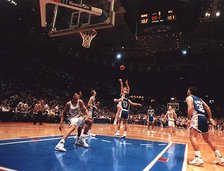




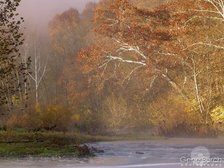








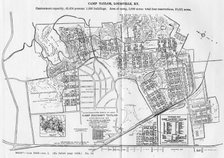
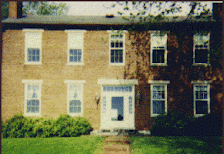

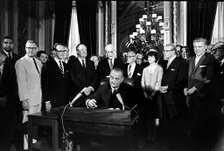

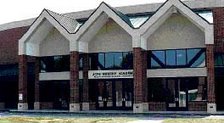
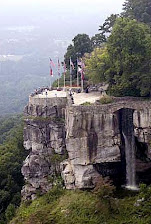

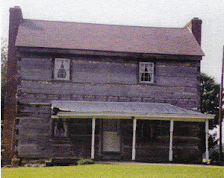
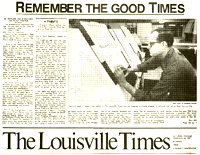
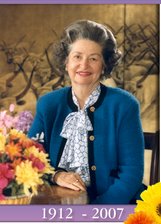
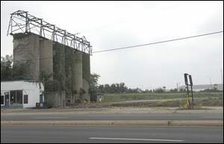
No comments:
Post a Comment